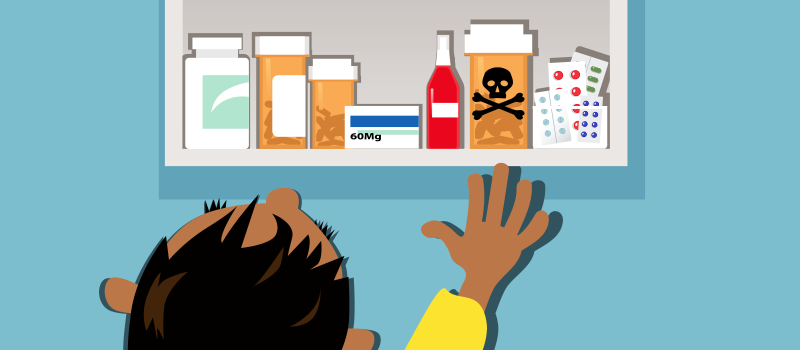What’s the Buzz
The Bee Healthy Blog
Mupirocin for Skin Infections: What to Know

Mupirocin (myoo-peer-oh-sin) belongs to a drug class called pseudomonic acid. Mupirocin is an antibiotic cream and ointment available only with a prescription. Here is some important information about using topical mupirocin to treat a skin infection.
Can you use mupirocin on a skin infection?
You can use mupirocin on skin infections caused by bacteria. Mupirocin is effective against a bacterial skin infection such as impetigo, a highly contagious skin infection caused by gram-positive bacteria strains such as Streptococcus pyogenes (strep) and Staphylococcus aureus (staph). This medicine does not work against fungal or viral infections.
Note that different forms of mupirocin is approved for different indications:
- Mupirocin ointment is approved by the FDA to treat impetigo in adults and children between 2 months and 16 years old
- Mupirocin cream is approved by the FDA to treat wound infection in adults and children between 3 months and 16 years
How does mupirocin heal skin?
Mupirocin ointment and cream have antibacterial activity, and it treats bacterial skin infections by killing bacteria or preventing their growth. Mupirocin inhibits bacterial protein synthesis, a vital process needed for the bacteria to multiply and grow.
Studies have also found that mupirocin has wound-healing properties. It helps to heal the skin by increasing the proliferation of keratinocytes and the production of growth factors in damaged skin. Proliferation is the process of cell division leading to an exponential increase in cell number; keratinocytes are the major cell type of epidermis, the outermost layer of the skin. These factors all contribute to the rejuvenating process of the skin, thus, promoting wound healing.
How to use mupirocin?
Mupirocin comes in the form of a cream or ointment. It is available in generic form as well as under the brand names Centany and Centany AT Kit. The cream or ointment should be applied directly to the affected area to treat impetigo and other secondary skin infections caused by bacteria.
Your health care professional will probably ask you to apply mupirocin three times a day for 1-2 weeks. Wash your hands before and after applying mupirocin. Apply a thin film of the mupirocin ointment or cream on the infected area of skin. You may cover the treated area with a sterile gauze dressing. However, do not use an airtight bandage such as a plastic covering.
Mupirocin is for external use only. It should not be swallowed or used on the eyes. Do not apply this medicine to burns unless your doctor instructs you to do so.
Read the prescription label carefully. Do not use more of the ointment or cream, or use it more often than prescribed. Do not apply the medicine to large areas of skin. Use a small amount on the affected area only.
Continue mupirocin treatment for the prescribed duration even if your symptoms are better. If you miss a dose, apply it as soon as you remember. However, if it is almost time for the next dose, skip the missed dose and go back to your regular dosing schedule.
How quickly does mupirocin work?
Most people notice an improvement within a few days of starting mupirocin for skin infections. Tell your doctor if you do not notice any improvement after 3-5 days of using mupirocin cream or ointment.
What are the side effects of topical mupirocin?
Possible side effects of mupirocin ointment and cream include mild skin irritation such as burning, stinging, pain, itching, dryness, redness, and other effects in the treated area. These effects usually go away once your body adjusts to the medicine. Tell your doctor if they are severe or persistent.
More serious unwanted side effects can include allergic reactions (skin hives, itching, swelling of the face or mouth); severe skin reactions with burning, itching, peeling, or crusting of the treated skin; fever and severe diarrhea. Tell your doctor without delay or seek immediate medical attention if you develop these serious unwanted effects.
Note: Diarrhea can occur up to 2 months after stopping mupirocin treatment. Do not treat diarrhea without talking to your doctor first. Call your doctor if you have severe or mild diarrhea that keeps getting worse.
Who should not use mupirocin ointment?
Patients who previously had a hypersensitivity (allergic) reaction to mupirocin ointment or cream should not use this medication.
What precautions should I take before and during mupirocin treatment?
Tell your doctor if you have had an allergic reaction to mupirocin. Give your doctor a complete list of your medications, including prescription drugs, over-the-counter products, dietary supplements, and herbal remedies, to avoid potentially dangerous interactions with other drugs.
Before starting treatment, give your doctor a complete medical history. Tell your doctor if you have kidney disease or gastrointestinal problems like colitis. Also, tell your doctor if you are pregnant or breastfeeding.
Mupirocin ointment contains an inactive ingredient that can be harmful to the body when a large quantity is absorbed. This risk is higher if you have moderate to severe kidney disease since your kidneys are not able to do a good job removing the inactive ingredient from the body. Keep in mind that this concern is only for the ointment form.
Call your doctor if your skin infection symptoms appear to be getting worse or do not improve after 3-5 days of using mupirocin. Remember, mupirocin cannot be used to treat viral infections like cold sores or fungal infections like jock itch or athlete’s foot. It is only effective against bacterial skin infections.
References:
- https://medlineplus.gov/druginfo/meds/a688004.html
- https://dailymed.nlm.nih.gov/dailymed/drugInfo.cfm?setid=3c4accb1-749d-4b89-bec5-5b9b7ea9dd23
- https://my.clevelandclinic.org/health/drugs/20357-mupirocin-cream-or-ointment
- https://www.mayoclinic.org/drugs-supplements/mupirocin-topical-route/description/drg-20064924
- https://www.ncbi.nlm.nih.gov/pmc/articles/PMC9035886/#












SOCIAL